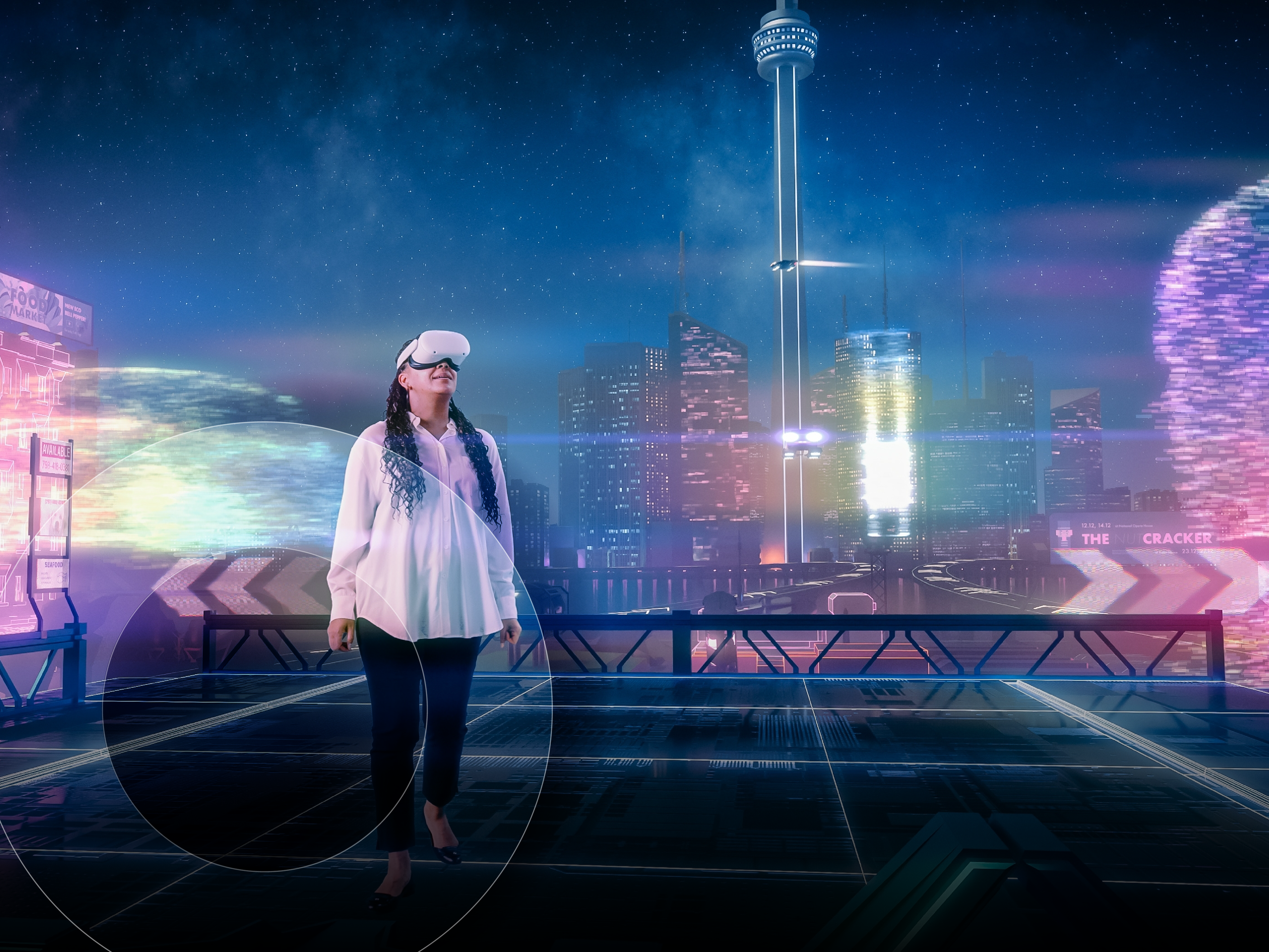How global organizations transform the workplace with IT innovation:
From virtual reality to a renewed focus on employee experience, our experts discuss how global organizations can use IT innovations to transform their workplace.

“Innovation is using technology and processes to meet a use case and change the way people do business.” – Anthony Cozzi, Senior Product Manager of Lifecycle Services
How receptive are global organizations to innovative technology practices? In an age of unrivaled connectivity, a renewed focus on employee satisfaction, and burgeoning developments in artificial intelligence (AI) and extended reality (XR), how are the largest organizations in the world capitalizing to ensure they remain ahead of customer demand and the competition?
Joining The Hub to answer these questions and share their insight into modern innovation are two of SHI’s thought leaders within the modern workplace, Senior Product Manager of Lifecycle Services Anthony Cozzi and Senior Director of Strategy and Product Management Kevin English.
Defining innovation
The Hub: Anthony, Kevin, thank you both for joining us to explore technology innovation in the modern workplace. As leaders who have worked with hundreds of global organizations to deliver end-user technology projects, how would you both define IT innovation?
Anthony Cozzi: Innovation is using technology and processes to meet a use case and change the way people do business. That could be new technology, such as augmented reality (AR) or virtual reality (VR) headsets. It could also be existing technology used in brand new ways to change a process for the better. That’s still an innovation if it enhances the way they do business.
Kevin English: Organizations are changing from operating on service level agreements (SLAs) to experience level agreements (XLAs) for modern workplace management. Are employees happy? Are they fulfilled? Are they productive? I see innovation in these concepts, specifically in digital and on-site employee experiences.
AC: Adding to Kevin’s point, organizations are innovating in the modern workplace by using technology or processes to transform employees’ day-to-day work. Many organizations, for example, are transitioning from hosting on-site onboarding workshops to giving new hires VR headsets so they can join virtually from wherever they are.
KE: New device form factors are certainly an area of innovation. Head-mounted displays are seeing interest in the consumer world, but there is a more focused interest in the enterprise world for XR. But innovation isn’t limited to the obvious shiny new devices like headsets; we are still on the bleeding edge of over-the-air device provisioning. Technologies like Microsoft Autopilot, Apple Business Manager, and Chrome zero-touch enrollment are only being used by a subset of global organizations, but we expect usage to grow rapidly as organizations mature their hybrid workforce technologies.
Driving innovation, despite the risks
“Fear of change and the unknown – fear of going down a path and it not working – these all hold organizations back. But that’s where we can help.” – Kevin English, Senior Director of Strategy and Product Management
The Hub: Given the inherent element of risk in any innovation, how are global organizations ensuring they don’t stand still when it comes to modern workplace technology?
KE: Fortune 2000 organizations have gotten where they are because they have been innovative. But innovation has changed over time. The way a big pharmaceutical company created a drug might have been innovative in the past, but the way they service their end users today may have barely changed since the 1980s. In large organizations, we often see innovation occur in pockets.
It’s hard for these organizations to remain truly innovative. Every year, most organizations hold an innovation week and invite technology providers to show them the latest tech. But too often, no action is taken because of security, regulation, and bureaucracy.
Corporate intrapreneurship is difficult, but good pilot programs can exist and succeed, especially if they show hard metrics at the end. Hard costs, faster time-to-market (TTM), increased sales – these will always get noticed in the boardroom.
AC: For many organizations, testing and adopting innovative technology or processes requires visualizing the benefit they will receive on the back end and having a clear return on investment (ROI). If organizations’ leaders can’t see an innovation’s benefit until completion, but they can see the price tag right away, it is unlikely to get greenlit.
KE: Fear of change and the unknown – fear of going down a path and it not working – these all hold organizations back. But that’s where we can help. SHI has assisted countless customers trying new, innovative technologies across the gambit of industries.
We’re in a unique position to help organizations benchmark innovative IT practices. We can advise on specific innovations a given industry is working on and discuss the expected ROI based on real-life case studies. We are already working with innovative technologies and we see what other customers are using. We can help with real, tangible insight.
Is the future of business virtual?
“Younger generations in the workforce will see how VR can be used. It’ll look less like a fad and more like a technology with real potential – which it certainly is.” – Anthony Cozzi
The Hub: Demand for XR devices has surged in the past year. What drives this demand and what will it take for VR or AR to be fully adopted by global organizations?
KE: COVID-19 drove the explosion in demand for VR headsets. We work with organizations that have active initiatives for combatting worker loneliness, as well as reducing training and travel costs. VR is an immersive experience. But like any innovation in business, it will expand once organizations find the right use cases that drive more business or enhance employee satisfaction or productivity.
VR is already influencing areas like training. HVAC workers, for example, can use VR for simulated heating and cooling system installations. Doctors use VR for simulated knee replacement surgeries. It can be used by knowledge workers; a human resources worker, for example, can use VR to host workshops about tone bias, and it will be more immersive and impactful than a traditional video conference call.
AC: These organizations are competing to hire the best new employees entering the workforce. This generation isn’t fazed by VR. Many organizations are now onboarding every new hire with a VR headset, which can be seen as an incentive. You’re not going to join an organization just for a headset, but you’re going to think it’s cool. This is where we see an incentive meeting the use case of training and collaboration.
Younger generations in the workforce will see how VR can be used. It’ll look less like a fad and more like a technology with real potential – which it certainly is.
KE: For VR to be more widely adopted in the workforce, it will need to provide unique value to knowledge workers, such as a new approach to existing norms like email, calendar, and contacts. If VR can leverage purpose-built applications, I think it will continue to grow in the long term.
AC: Organizations are already using VR technology in field services. When an on-site field worker needs assistance, an expert located anywhere in the world can equip their VR headset, and it’s as if they’re on location looking right over the worker’s shoulder. Now that expert can say, “Now you see that red wire there? I want you to connect that red wire to that thirteenth port on the right.” Those types of interactions are transforming the way business is done and impacting the way services are provided.
The Hub: VR may become a noticeable addition to the workplace, but where else are you seeing innovative technologies create real business value for organizations?
KE: Organizations are investigating or testing new ways of doing things in all areas of their businesses. From the supply chain, throughout the customer journey, and in the workplace, there is new technology available to drive optimization and productivity. Digital twin technology in the supply chain is enabling organizations to replicate their manufacturing environments and test new processes virtually.
IoT is well known now, but the increased adoption of 5G is accelerating the speed and breadth of data that can be processed by edge devices, allowing organizations to have better visibility of their processes and driving optimization.
AC: In the workplace, the way organizations are now using digital experience (DEX) tools is innovative. The monitoring of networks’ end-user devices is not new, but synthesizing this with application performance and end-user sentiment is giving us something new and different. Now we’re not just looking at the hard drive performance, but the overall end-user experience. Then you can measure the changes you make and how that impacts the user – not just the technology. That is an innovation.
Innovate with SHI
Global organizations work with SHI to drive IT transformation and innovation across their entire digital workplace. Providing a compelling mix of OEM partners, technology experts, value-add services, and cutting-edge Integration Centers, we enable customers to achieve their business outcomes with confidence and in a sustainable fashion.
We can help select the right technology, lower costs, increase efficiency, and build a solution that scales as you continue to grow.
Contact SHI today to discuss your organization’s modern workplace goals and understand how the right technology can enable your business transformation.




